This essay was published in Haworthiad 16:86, 2002.
I wrote an article about Haworthia rossouwii in Aloe 38:31(2001), in which I resurrected this old name to replace that of my own H. serrata. This was necessary because I had found this plant (because of its localisation and its abundance there, it is better to say ‘this species’) at two places near Bredasdorp as opposed to where I had described my species from near Heidelberg.
One needs to know something about the geography and geology of the Southern Cape (and the Overberg as a part of it is also known) to really follow all the ramifications of any discussion about Haworthia, including this one. In fact one needs to know a whole lot more, and I will also try to explain that and its implications for the collector and Haworthiophiles. This “whole lot more”, I will call the Corporate Mind because it includes so much – so remember CM! If I regard H. rossouwii as a species, I have to consider all the plants and all the places where they grow in order to determine the nature of this particular system of living things. As I explained in my article, there is a problem with the fact that little is actually known about the Haworthias of the Overberg. They occur in small populations scattered over a fairly wide area which has been heavily impacted on by agriculture. Thus about 90% or more of the Overberg is now wheatfield or pasture. Like Gasteria carinata, which is also a Southern Cape species, Haworthia is associated with rocky outcrops and thus also with the geographical erosion and drainage systems of the area. It is quite probable that cultivation has had relatively very little impact on Haworthia in terms of actual available and suitable habitat.
The problem is to get to all the small potential habitats and explore these at a scale which will help to resolve the problems of variability, relationships and classification. While writing about H. rossouwii, I was very conscious of this problem and the fact that my explanation is not complete. There are some collections by Chris Burgers which I have not seen, and there are many potential habitats which I have not explored either. The place Kathoek and H. variegata var. modesta which grows there is a particular case in point. Kathoek is at a point midway between the Breede River and Bredasdorp. It is just east of the De Hoop wetland/stream and on the northern edge of the Coastal limestones. In the west, also on limestones, is H. rossouwii var. petrophila which I first placed with H. variegata. In the south (also on coastal limestone) is H. rossouwii var. calcarea, which I originally had with H. mirabilis. To the north is H. variegata var. hemicrypta which is on Silcrete of a quite different geological origin. But H. variegata variants, as I interpret the populations, are also on and about the Potberg to the east which is Cape Sandstone.
My problem is “How do these populations actually relate to one another?” What is missing? What can I find to better explain their similarities and their differences? So at the back of my mind is the wish to explore the Coastal limestones between Bredasdorp and the Potberg and find out more. But it is not as easy as that. I also want to know more about H. mirabilis, H. maraisii, H. heidelbergensis, H. mutica, H. minima, H. marginata and H. pumila, which all also occur in the Overberg area and each have question marks attached. They each present problems that I would like to resolve for my own satisfaction, without being confused and befuddled by others who are toying with the same body of knowledge at different levels of expertise and ignorance. In this play we are using words, terms, names and conventions. For this play we need to have a commitment to truth and use the same language or else it is all just meaningless.
So we come to what took me to the Overberg in November 2001. Was it was just my curiosity about all those inviting rocky unexplored places? Is it to learn something more myself? Is it to impress anybody? Actually it was many things including a fascination with chameleons – largely my wife Daphne’s. In March 2000, Daphne and I had come across a most remarkable chameleon at Napier. It was on a small shrub among whitish dried grass growing on a calcareous outcrop strewn with white quartzitic pebbles. The tiny reptile was ivory white, with a stunning array of small orange tubercles on sides and back. One has to know the Cape Dwarf chameleon (Fig.1) and its cousin, the Robertson Dwarf, to know how beautiful and amazing these creatures can be. Another thing was H. mutica and my fascination with collections of this species and their histories of discovery and exploration which are stories of their own. Still another was the news that the Botanical Society had funded a researcher to explore the remnants of the vegetation of the wheat areas. What had he found? Apart from Haworthia, I had once been involved in a preliminary attempt to map and identify vegetation remnants for conservation purposes, and had vainly tried to draw attention to the curiosities of the Silcrete outcrops and remnants of vegetation among the wheatfields.
This researcher was an old acquaintance, Nick Helme, who kindly told me what Haworthias he had seen in his exploration. There was not much new, except for H. mirabilis east of Caledon, and this became our first stop. The site is south of the main area for the species which is along the Riviersonderend river north of Caledon. It does, however, occur in recognisable form south-east of Caledon, also around Napier where it transmutes to some degree (inter alia to the var. badia), and then also at Bredasdorp. There it also transmutes to the var. sublineata (sandstone) and var. mirabilis (the old mundula – and there may be some other way out, but for me this represents the low cussedness of botanical nomenclature). What H. mirabilis does to the north and east of Riviersonderend actually fully explains the problem of classification of Haworthia, and who knows if anyone will ever write that explanation – and truthfully.
Nick Helme’s site is a deep valley which drains to the south. Typical of the area, are these small drainage areas which seldom have permanent water. There may be odd pools lasting into mid- or late summer. There are often exposed shale ridges which host a particular array of succulents and other species – and are often home to owls too. The first problem is access and where does one find the landowner after one has succeeded in finding the place? If one does find the dwelling, will it be the right one and will one find the landowner. Will it be a big aggressive StBernard and more aggressive and ugly Rottweiler reflecting the mindset and security fears of the owner and grossly offending my own, like once near Worcester – or will it be a lonely and over friendly sheepdog. November is a very bad time. This is when the wheat harvest is on. At the end of a bad season, when the crop is drying and it has to be cut and reaped the weather is playing its usual strange tricks, farmers cannot be expected to be approachable. But we did find a helpful soul. From the farmhouse, we drove twenty kilometres back to the main road to the roadside stall, where a family member, Herman DeKock, gave us the necessary permission to venture onto the property.
It does seem an easy business, but in fact it becomes very complicated. Nature Conservation regulations are strict, and land ownership, presence, trespass, stock theft, personality and who knows what else, influence the mindset when setting out an expedition of this kind at all. With those problems all out of the way, and only then, is one able to really enjoy being out in the field and communing with nature – which it is all about in the first place. So we found Nick’s site. We climbed through the fence (s) and tried not to disturb the forlorn sheared, miserably self-conscious sheep that clustered around the earthen dam. It was hot and dry and the most promising spots were quite a long way off. One has to plan one’s approach as the southern slopes are often quite densely vegetated and very uncomfortable to traverse. Snakes are also a consideration and especially in early summer. On this trip we never saw one, although Daphne surprised, and was surprised, by a Lynx drinking at a waterhole. So we did find the plants that Nick had said and took a photograph for the record (Fig.2). Just ordinary H. mirabilis var. triebneriana (cussedness – there should be no typical variety, just a broad general name mirabilis).
From here of course we went to the chameleon at Napier. What a laugh! We had difficulty finding it on the same day on the same bush, five minutes after first seeing it. So expecting to find any chameleon at all, and I have never seen a chameleon in the field in all my years of plant exploration, was quite the wildest dream. But with a dossier of 60 individuals recorded on our small-holding at Kuilsriver over a period of about a month, we felt entitled to hope (all contributing to CM). It is also a most wonderful excuse to be out in the country.
We headed for DeHoop. This is also quite a story. Where do we stay? The DeHoop Nature Reserve is a wonderful place with great accommodation, but it is not where we wanted to be. The staff does not know what it is we are looking for, what our CM data base contains and what our needs are. We want to see the area around the north of the wetland. This is half private land, and half state-owned. Besides there is a travellers Lodge on the edge of the reserve which we understood offered easy and official access to the reserve, presumably to near where we wanted to be. Not so. It is one thing dreaming about this exploration while sitting at home with the map, and quite another to be faced with the problems of roads, fences, ownership, dogs, snakes, flies, mosquitoes, permissions, heat, cold, wet, terrain, bush, visibility, time, distance, misinformation, local “knowledge”, incipient old-age, food, water and the spirit of inspiration and energy which drive the legs (CM). So the Lodge was an unfortunate mistake (we did look, and we did also look where we were told an Haworthia did grow – it was Gasteria carinata), and we did end up at the office at DeHoop Reserve. You see over the years, one comes to realise that helpful and kind as people by nature are, an awful lot of time is spent chasing red-herrings and wild geese (CM). The help and information one gets is very often of a negative hindrance rather than a positive help. So my real gratitude to the manager there, Mr Ben Swanepoel, who without serious qualm, entrusted us with the key to the northern part of DeHoop where we needed to be.
Unfortunately the problems listed above rather limited our activity. We exhausted our energy climbing up and down rocky slopes in an area which should have occupied us for a week. It is an area which has to be explored by someone at sometime. We found naught, which should not in the least be interpreted to say there are no haworthias there. The terrain is formidable and also most promising. But CM called.
We moved to accommodation closer to our budget restraints and nearer to our goals. Driefontein, where the owner graciously made the necessary contacts for us. What a place – the cold vegetated coastal limestone behind, and featureless cultivated endlessness in front. I have an old record of a collection of mine of H. mutica from “Beyersdal”. Subsequent travels indicated that place, name and memory did not match. So we went to Beyersdal. We did find mutica and it was a different place and a new record (Figs.3a, b & c). Who can actually describe the wonder of plants like these? In tiny patches of rock in a sea of wheat and low-grade (by rainfall and vegetation standards) pasture. Also the quiet, the two owls, also Gasteria carinata again, this time the Haworthias among them – unusual. The extraordinary colour of the plants. This time the bronze colours of badia. Nearby we also visited an old, by thirty years, locality for H. heidelbergensis. Still there and astonishingly in among white quartz in a small outcrop, but in two little groups occupying hardly two square meters in the approximately two hundred available (Fig. 4).
Then we went to Vanderstelkraal. We had met the owner, Mr Adam Albertyn, who very kindly let us wander over his farm. CM. How does one explore a place like that without living there? It is on the edge. The agriculturally useless coastal limestone at the back, and the productive massively utilised Bokkeveld fields at the front. If terrain had allowed, there would not be so much as a hedgerow to have conserved anything. We saw some very interesting sites and exhausted quite a number of things, like energy, time, passion for the quest, tolerance to bad weather, ostriches, tight-strung barbed-wire fences, no roads and also to the heaviness of the overwhelming destructive productive activities of man. We did not find Haworthia. But I omit a lot, including all the good farming. Mr Albertyn owns the eastern side of the DeHoop wetland where he has a 4X4 route – and there is also a sixty-year old legend of H. minima in that particular area which I would like to confirm. Not this trip though. We did try to the west later, where CM eventually prevailed against us – aided and abetted by overgrowth of alien acacias and the negative vibe they seem to generate (by the side, at Vermaaklikheid, Riversdal, H. mirabilis var. paradoxa grows/survives under Acacia cyclops).
Then we decided to climb the mountain behind Kathoek. Why? I cannot remember why I climbed there in the first place, or how I even did it. Then I found plants in a burnt out area, under the remnant blackened skeletons of Protea – natural fire cycle encouraged by farmers. It does produce a grazeable growth and also invasive aliens. The plants of H. variegata var. modesta were just discernible sticking out from loose sand. Kobus Venter later also visited Kathoek and found plants which were more robust. The plants have spreading variegated leaves (in cultivation?) and while I had no real problem associating them with Karsriver, viz. H. rossouwii var. petrophila, they seemed to have a greater affinity with variegata at the Potberg and Luiperdskop. But my collection and Kobus’ seemed at variance. So Kathoek was a must. From the road CM prevails and it looks quite an expensive option in terms of CM resources. Actually the climb was quite easy. We found the plants before we expected to. They did not look like what we expected them though. They were densely clustering (expected) and in rock crevices (Figs.5a, & b) and pans (Figs.6a & b) The rosettes were tiny and reminiscent of even H. reticulata (see Fig.7) At one place a dense cluster under and in a restioid grasslike plantlet, looked just like a yellowish-brown windblown fallen mass of dry leaf bracts (Fig.8). What impression did it make? Nothing new. It provoked the existing doubt. The population is very similar to petrophila and less so to variegata and hence this variety, with the exclusion of the Potberg population COULD BE transferred to H. rossouwii. But this does not help much, because the Potberg var. modesta is less like the northern Potberg’s two populations and the Luiperdskop population of H. variegata var. hemicrypta, and not more like petrophila! So the CM has to carry this anomaly together with the position of calcarea until whatever else to be found is found. These finds are not going to make things easier to resolve in the CM, nor to explain in a way which assuages the CM of anybody else.
All the while we were pondering other clues to the nature and relationship of things. Like the endemic Braunsii vanrensburgii; a curious specimen of Carissa bispinosa so laden with large red fruits it resembled a Pyracantha; Euphorbia silenifolia everywhere, and what a strange distribution this summer-deciduous geophyte has; and what about Asparagus; what is the relationship of A. capensis, A. mariae, A. suaveolens and A. stipulaceus? Where was Aloe brevifolia or A. saponaria? What was that pugniform Euphorbia at Driefontein or the bayeri-like one at Vanderstelkraal?
Unexpressed CM – we are using my son’s LDV as in my own car anything below well-maintained road is not negotiable. CM – the cellphone we arranged for failed. There is a call in my sub-conscious ‘vehicle needed back home’. We end the trip a day earlier and the message turns out to be true as there is a breakdown of one of the other delivery trucks.
On the way home we pick up some loose ends. We call at a spot north of Bredasdorp where in my lucky ignorance I once found mutica. In several subsequent visits I could not locate it, until one year Daphne and I together with Lawrence Loucka had a very thorough search of the small spot. We found about five plants in a spot about 1/2sq meter. At a later visit we found that the plants had seeded and there were many seedlings but crowded together with seedlings of Aloe ferox. Generally Aloe and Haworthia do not mix. Aloe need more root room than Haworthia and Haworthia cannot tolerate competition from larger plants. So we thinned out both aloe and haworthia seedlings. This visit revealed the successful fruits of our activity (Fig.9). The two bigger adult plants were almost being pushed out of the ground by a burgeoning aloe seedling, but there were about 15 other vigorous and healthy plants to carry the group forward. CM – this was an interesting repeat observation of the small distances that seed and seedlings actually do commonly disperse. I have seen the same thing with hybrids where the hybrid is often within the multiple body of one of the parent species.
Mission ending, we made our last visit to Drew. This story is written more fully elsewhere. We had found the pollen source for a plant of H. mutica which I collected there more than thirty years ago and which Kobus and I had taken to the field again to see if seed would set. This surviving single plant is now a collector’s dream which I dub “Silver Widow”. No one had succeeded in finding plants around where a huge centre-point pivot installation now graces the landscape. We were sure the plants were gone, and taking the plant back there was a kind of forlorn gesture of regret that more had not been done to conserve the population – and that so much had been done to eradicate the plants (two hundred plants had been collected and sold to Triebner circa 1935). If anything can be done or could have been done at all to have saved its family? But it worked and we got seed. Where did the pollen come from? The pollinator is mainly a solitary bee with a fairly limited flying range. The pollen parent had to be somewhere near. Daphne and I had made several excursions to add to the many different attempts that are known to have been made to find them. Finally I decided that we just had to look again and the plants had to be where we had failed to find them before. So what happened? We left the farm house and walked straight to the spot (getting ‘stung’ by the electric stock fence on the way) less than 300m away and probably about 150m from where we had left Silver Widow to be pollinated. There were about 35 plants (Fig.10) in an area of about 3sq m in flower under Eriocephalus africanus. So now we returned to successfully collect seed.
The curious thing in CM and all this discussion about big things like Continental Drift, and Biomes, and Vegetation, and Habitats, and Ecotypes, is that H. mutica is not particularly concerned. Here at Drew it grows in an ancient river-boulder situation in what we can call renosterveld under Eriocephalus. At Beyersdal it is on the edge of a stream-bed on exposed Bokkeveld shale with Gasteria carinata. At Hasiesdrift it is on a gravelly bank (Bokkeveld shale) with dense Aloe ferox. Near Napky it is on silcrete with grass. West of Swellendam, it is on whitish-clay, probably associated with silcrete and growing within a restioid species and with Gibbaeum esterhuyseniae. I have also seen it on a fairly bare hillside with a scattering of quartzitic pebbles where the parent shale is too dense and shallow for cultivation or to support denser vegetation. The places hardly have anything in common other than their more general geographic containment, climate, and low biomass potential. How, ever, did they get to their widely-spaced, isolated island sites?
So the tale ends with the reflection on the criticism that I have not treated H. scabra and H. starkiana in the same way I have H. retusa and H. mutica. I have been “inconsistent”. Readers can research and educate their own individual CMs (corporate minds) to the point that they can form opinions which are consistent to the point and purpose of any communication. Aren’t we lucky that the Robertson Dwarf chameleon is a small animal (Fig.11 – by Scott Russel).
Acknowledgement:
This fun work is really just about people. Daphne, who kept me company. Janet Albertyn at Nachtwacht, Herman Dekock of Jongensklip, Thys DeVilliers at Boskloof, Tom Ambrose at the cement-block operation at Napier, Rory Allardice at Buchu Rest-camp, Ben Swanepoel at DeHoop Cape Nature Conservation, Annette VanEeden of Driefontein, Mr Dawid Beyer of Beyersdal, Adam Albertyn of Vanderstelkraal, Theo Blom of Soutspanvlakte, Jan Joubert of the adjacent farm, and Beth and John Humby of Sanddrift. Their good-will and kindness is unforgettable.
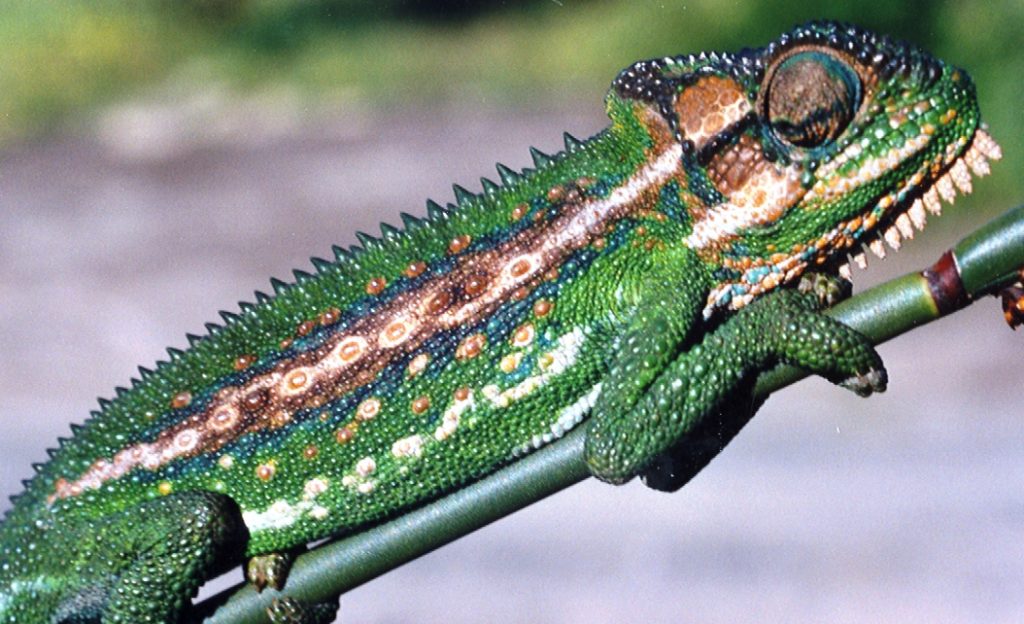
Fig.1 Cape dwarf Chameleon – Bradypodion pumilum. Markings, colour, tubercles and spines are individual characteristics. It is said that even the genus is in doubt! 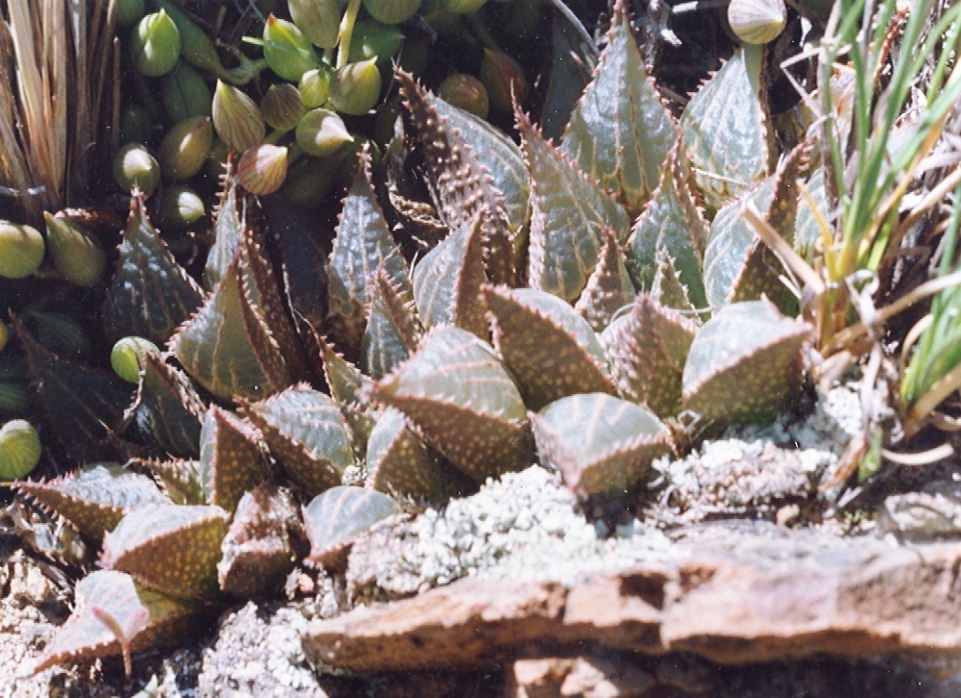
Fig.2 Haworthia mirabilis var. triebneriana, MBB7059 Jongensklip, Caledon. Note the reddish spines. 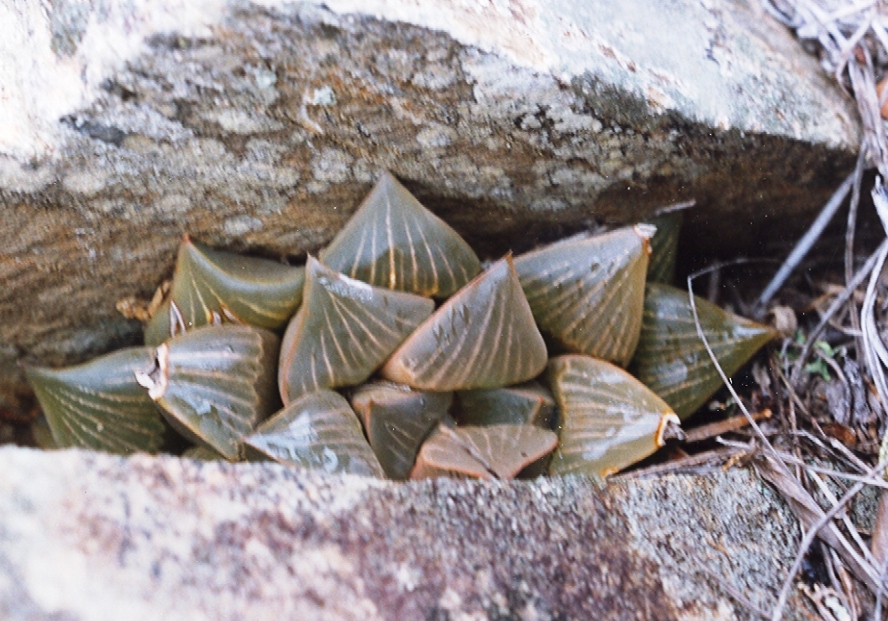
Fig.3a Haworthia mutica var. mutica, MBB7060 Beyersdal, Bredasdorp. This plant is exposed to full afternoon sun for at least a few hours each day. Note the mucronate (pointed leaves). 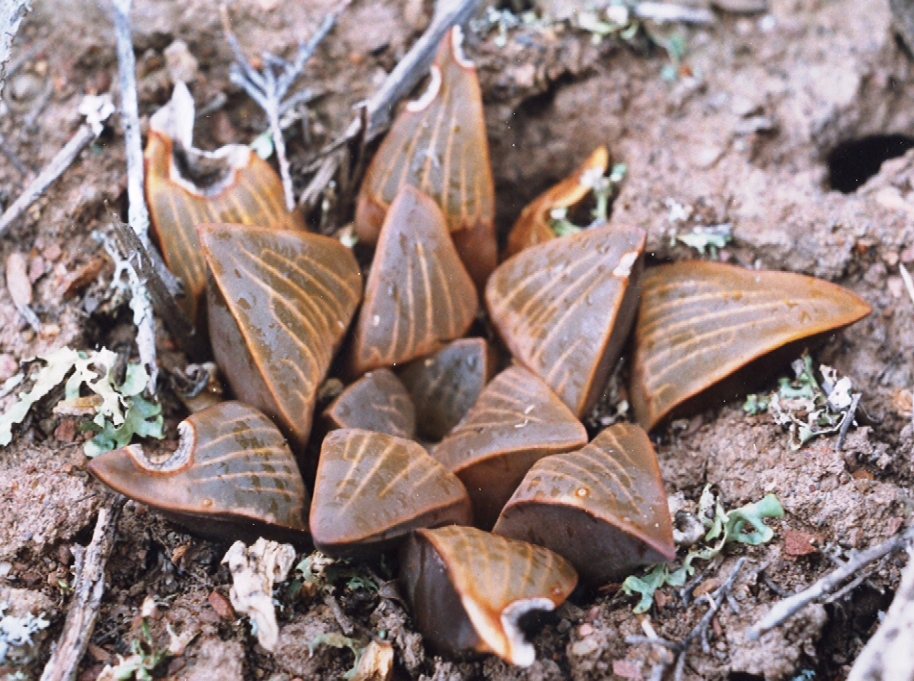
Fig.3b Haworthia mutica var. mutica, MBB7060 Beyersdal, Bredasdorp. A more general specimen with rounded leaf-tips. 
Fig.3c Haworthia mutica var. mutica, MBB7060 Beyersdal, Bredasdorp. A particularly compact specimen. In this population, the waxy sheen of the species seemed less conspicuous. 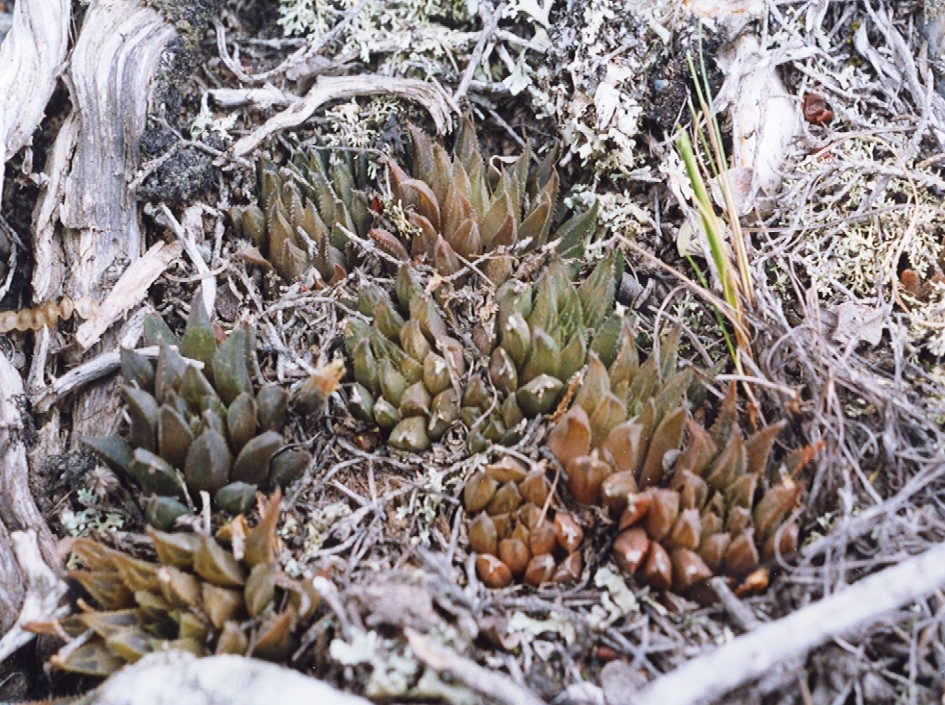
Fig.4 Haworthia heidelbergensis var. minor, MBB7063 Beyersdal, Bredasdorp. Varietal names are just a geographical convention, as indeed even the species which I recognise, seem to be. 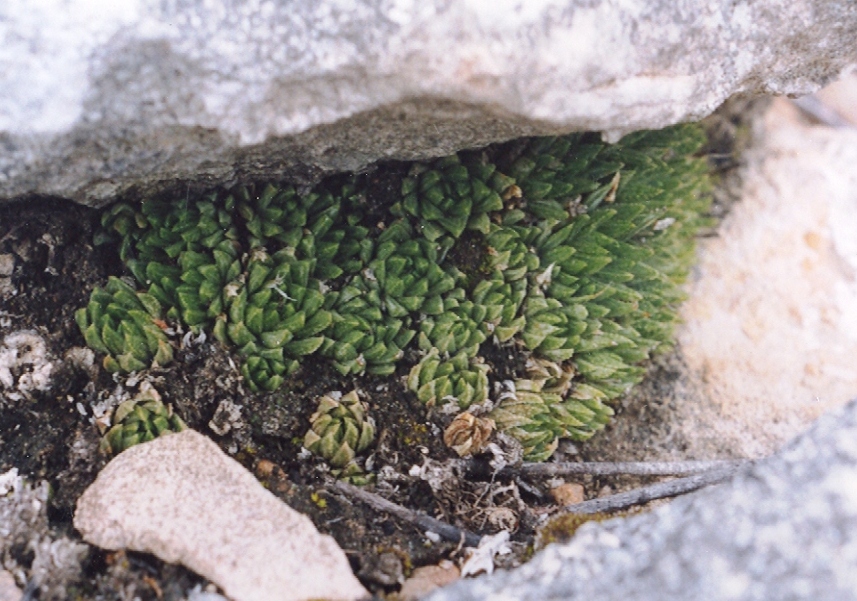
Fig.5a Haworthia variegata var. modesta, MBB7061 Kathoek, Bredasdorp. A cluster under a small rock overhang. 
Fig.5b Haworthia variegata var. modesta, MBB7061 Kathoek, Bredasdorp. A cluster in an exposed crevice and visible as a dark mossy fill. 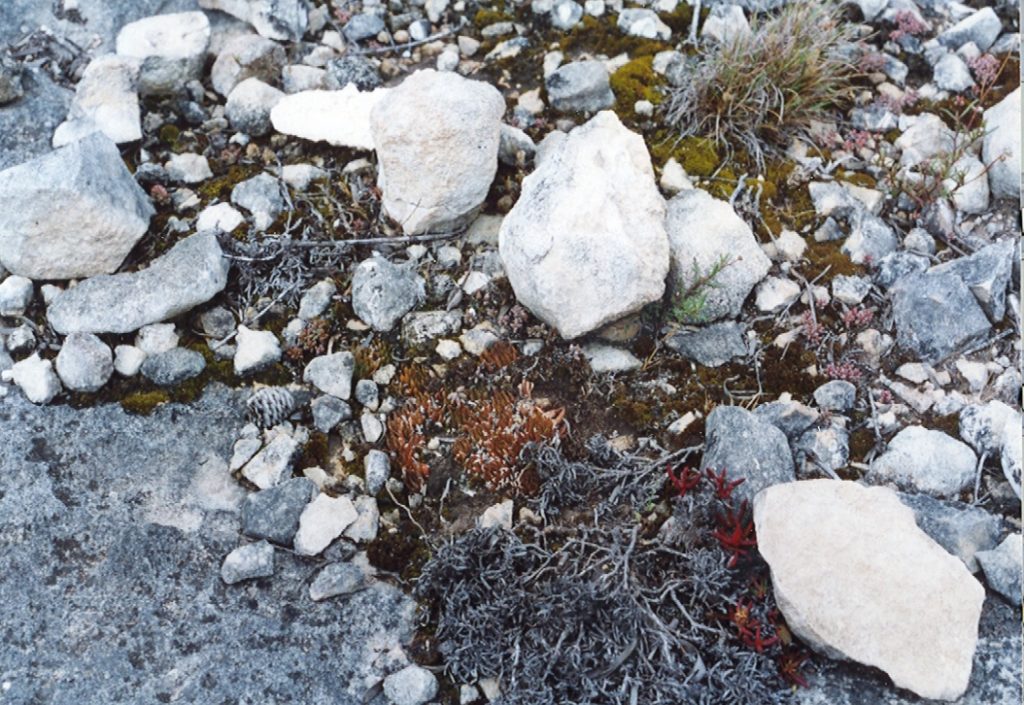
Fig.6a Haworthia variegata var. modesta, MBB7061 Kathoek, Bredasdorp. In a shallow rock-pan on the crown of the hill. 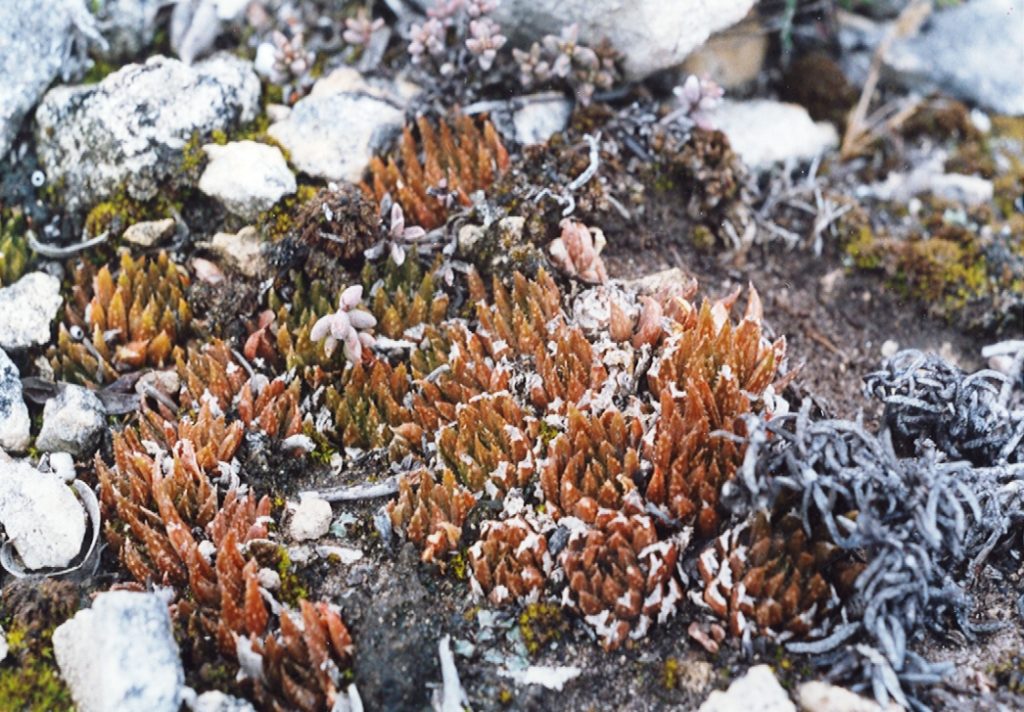
Fig.6b Haworthia variegata var. modesta, MBB7061 Kathoek, Bredasdorp. In a shallow rock-pan on the crown of the hill – a closer view. 
Fig.7 Haworthia variegata var. modesta, MBB7061 Kathoek, Bredasdorp. Very reminiscent of H. reticulata say south-west of Robertson. 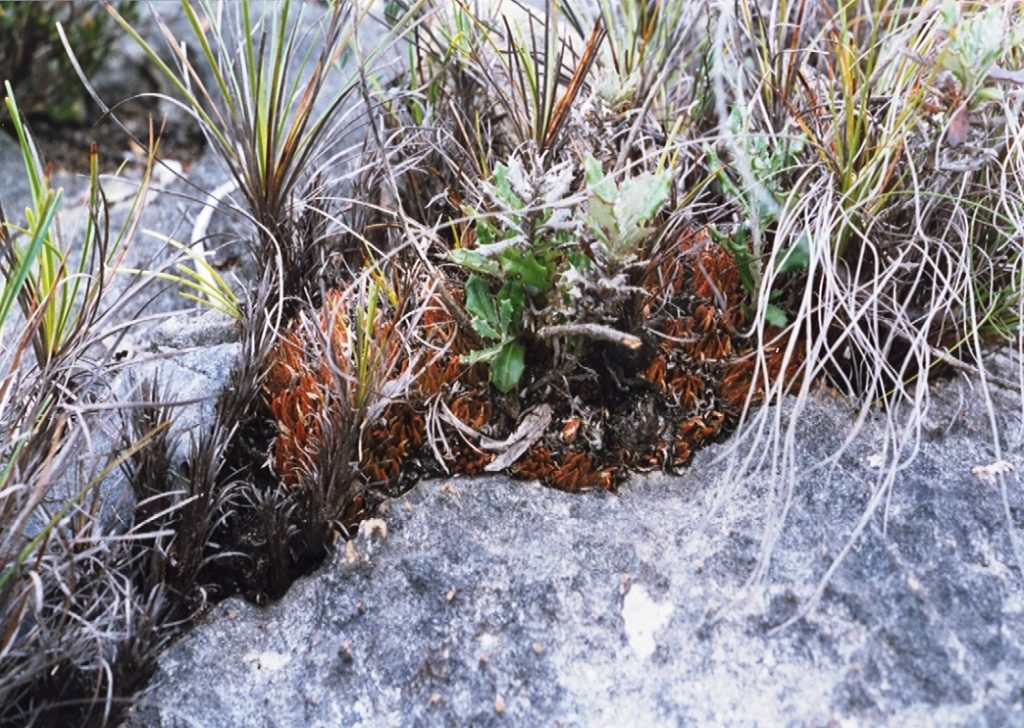
Fig.8 Haworthia variegata var. modesta, MBB7061 Kathoek, Bredasdorp. Barely recognisable to the undirected eye. 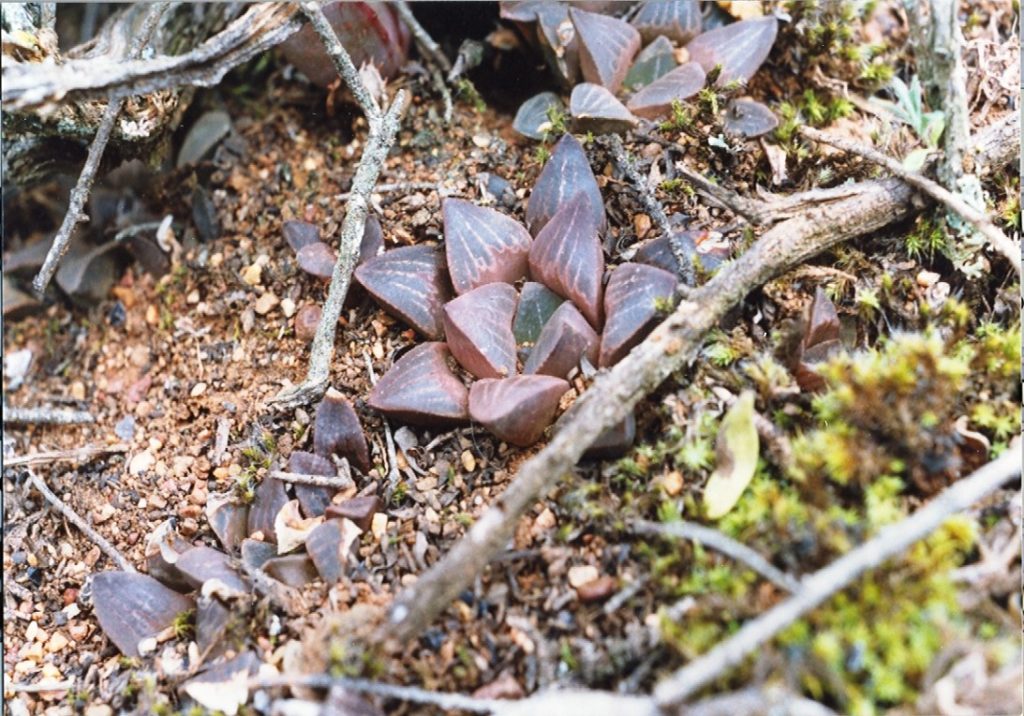
Fig.9 Haworthia mutica var. mutica, MBB6982 Hasiesdrift, Bredasdorp. Nine seedlings in a tiny island of plants, in a bigger island of Aloe ferox and surviving vegetation on the edge of a wheatfield. 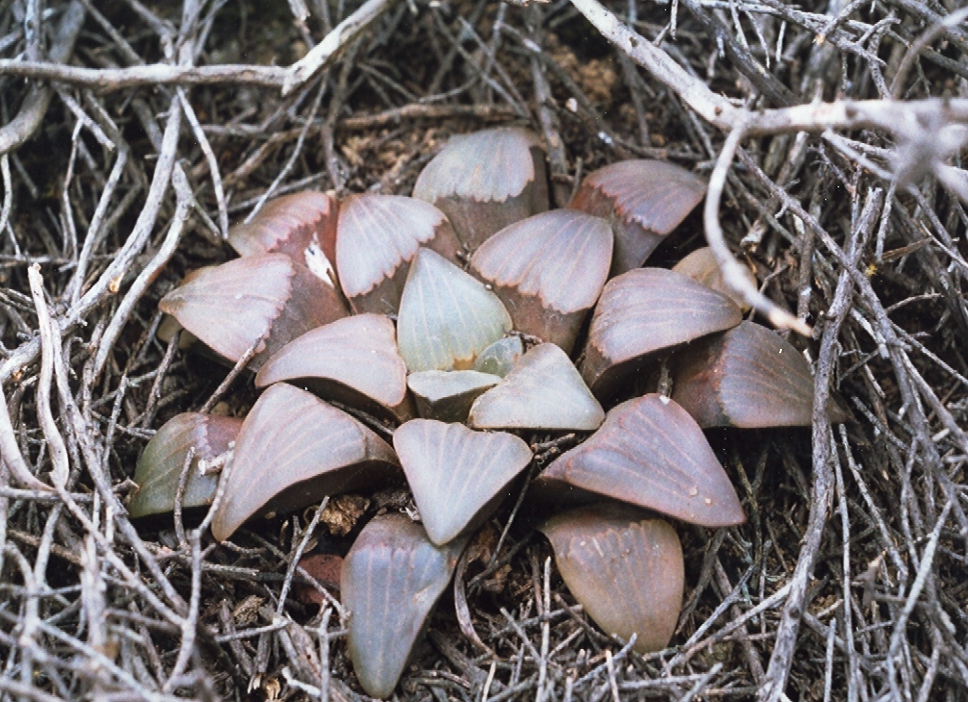
Fig.10 Haworthia mutica var. mutica, MBB7064 Sanddrift, Drew. This lovely plant is nearly 120mm diam. and the largest of about 50 plants. They survive, and have survived in this small heavily impacted area for so long. There is no where for them to go when options must have been very limited to start with. 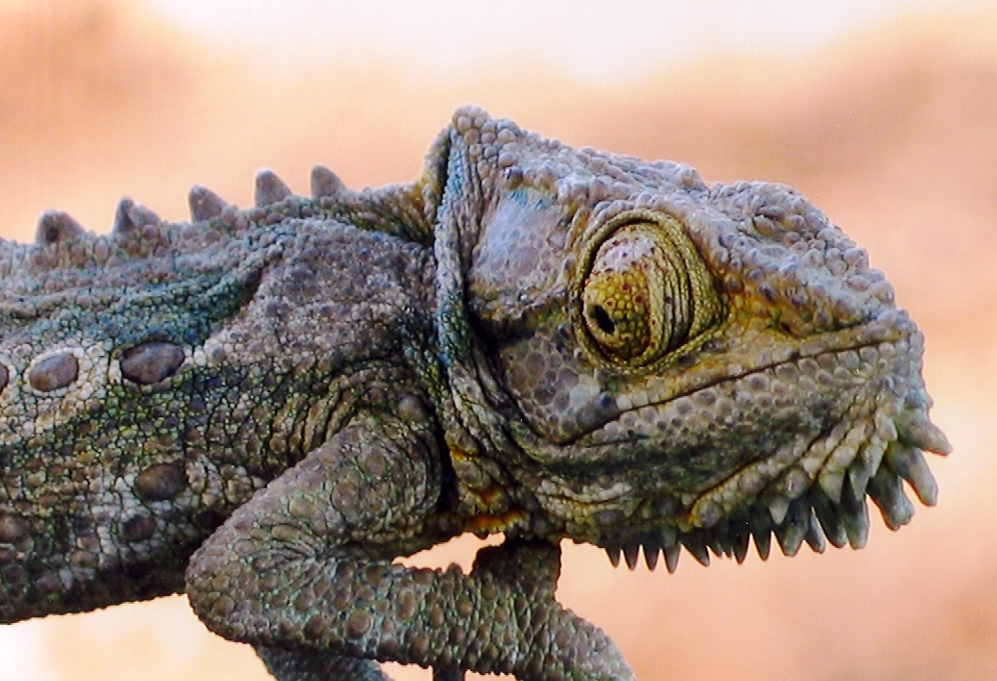
Fig.11 Robertson dwarf – Bradypodium gutturale, photo by Scott Russel. Zoologists cannot determine if the Robertson dwarf is different from the Karoo dwarf, or from the two subspecies of the Namaqua dwarf. They use the same fuzzy logic that botanists do, plagued by low sampling and difficult application of statistical principles and probabilities.
